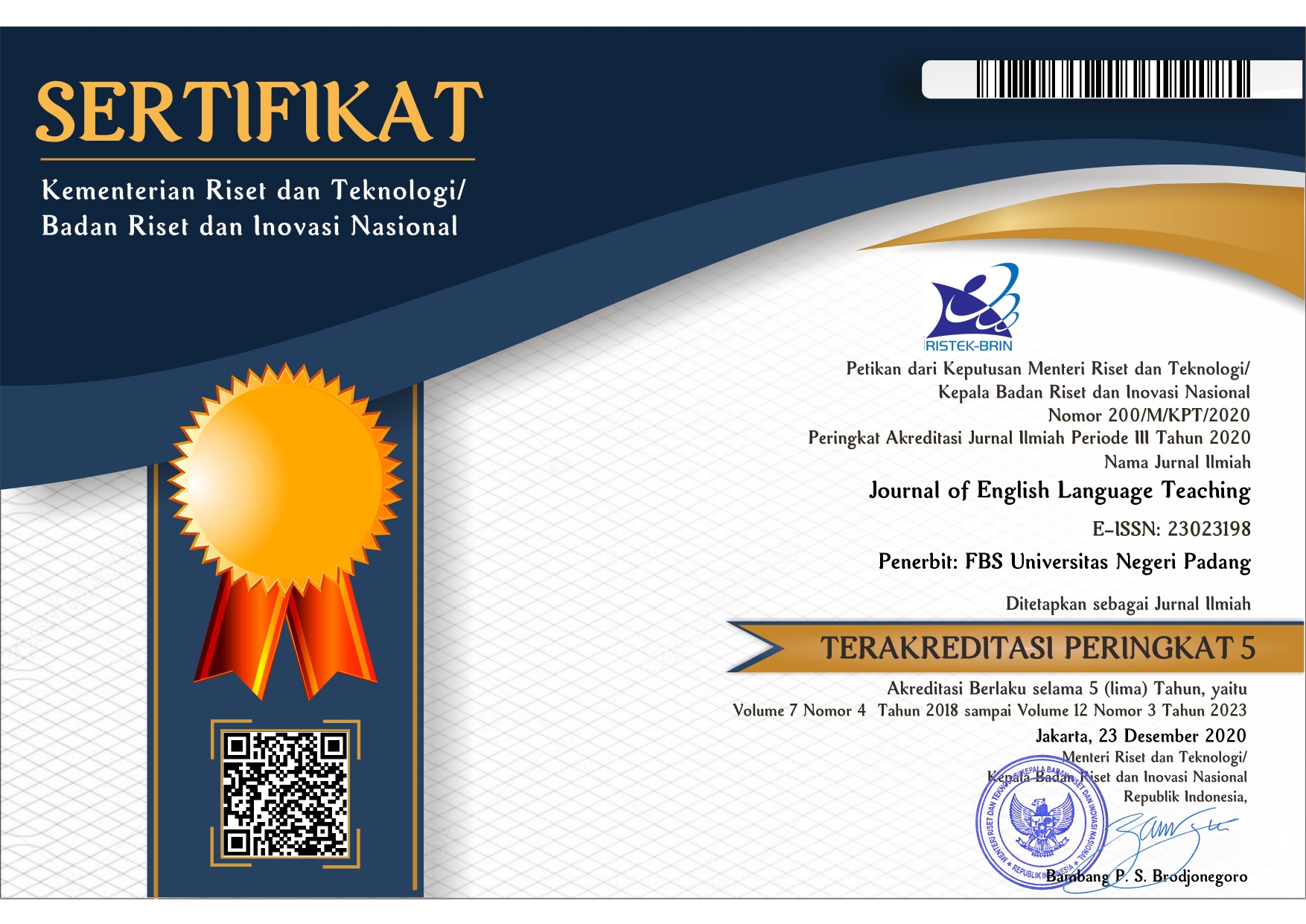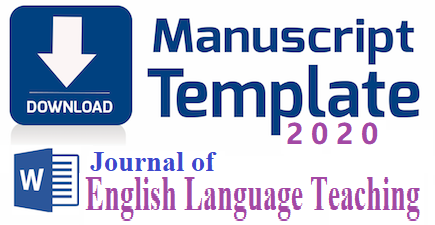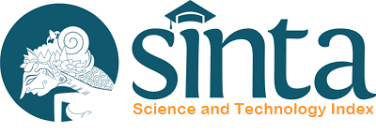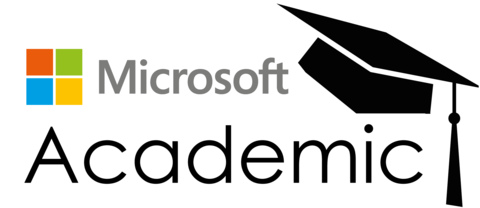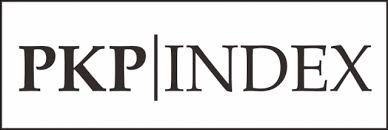Using Buzz Group Technique in Teaching Writing Analytical Exposition Text for EFL Students at Senior High Schools
 ), Leni Marlina(2),
), Leni Marlina(2), (1) Universitas Negeri Padang
(2) Universitas Negeri Padang
 Corresponding Author
Corresponding Author
Copyright (c) 2019 Journal of English Language Teaching
DOI : https://doi.org/10.24036/jelt.v8i1.103322
Full Text:
 Language : en
Language : en
Abstract
This paper aims to explain how to teach writing analytical exposition text by using the buzz group technique. Buzz group technique is a discussion technique which consists three to six members for gathering ideas in a brief time. For implementing this technique, the EFL students will have a small discussion before the larger one to discuss a topic of analytical exposition text. They are asked to gather ideas from some diverse sources and create a new text together. Buzz group technique will be applied in collecting information stage or pre-writing stage. The students will be divided into some small groups to discuss a topic in 15-20 minutes. After that, the group’s members will select a leader, a note taker and a time keeper. However, buzz group technique is very useful to help the teacher in teaching writing. It is also helpful for the students in finding ideas at the beginning of writing activity. Moreover, it makes the students actively participate in the learning process and build a positive interaction among the students. In addition, the students will be more confident to express their points of view through the discussion. Therefore, buzz group technique can be an alternative technique for the English teachers to teach writing analytical exposition text.
References
Arivananthan, Meena. (2018, July 4th). “BUZZ GROUP”. UNICEF-Learning and Knowledge Exchange. September 25th. Retrieved From https://www.unicef.org/knowledgeexchange/files/Buzz_Groups_production.pdf.
Barkley, Elizabert E. K, et al. (2012). Collaborative Learning Techniques. Bandung: Penerbit Nusa Media.
Brewer, W. Ernest. (1997). 13 Proven Ways to Get Your Messages Across. California: Corwin Press.
Fulwiler, Toby. (2002). College Writing: A personal approach to academic writing-3rd ed. Portsmouth: Boynton/Cook Publisher,Inc.
Grenville, Kate. (1950). Writing from Start to Finish: a six-step guide. Australia: Allen & Unwin.
Hedge, Tricia. (2005). Writing 2nd Edition. New York: Oxford.
Jufri. (2016). Teaching Speaking and Writing at Junior and Senior High School as Demanded by Curriculum 2013. Lingua Didaktika, 10(1), 60-73.
Mason, David J. (1995). Trainer’s Toolbox of Training Technique. Kenya: International Labor Organization.
Mulatsih, Dwi. (2013). “The Effectiveness of Using Buzz Group TechniqueIn Improving Narrative Writing Of Students’ At Ma Ar-
Rosyidiyah Kota Bandung” (Undergraduate Paper, State Islamic University Bandung). Retrieved from http://digilib.uinsgd.ac.id/316/.
Ni’mah, Wachidatun. (2015). “The Use of Buzz Group Technique to Enhance Students’ Activeness and Writing Skill of Hortatory Exposition Text” (bachelor’s degree Thesis, Walisongo State Islamic University). Retrieved from eprints.walisongo.ac.id/4576/.
Nuardi. 2016. The Effect of Using Buzz Group Technique on Students Ability in Writing Analytical Exposition Paragraph. IJIELT, 2(2), 209-220.
Riswanto, Moh. (2016). Expressing Oral Argumentation Through Buzz Group Discussion at Eleventh Grade Students of SMAN 3 Palu. E-Journal Bahasantodea, 4(2), 71-78.
Rozimela, Yenni. (2016). From Recount to Narrative: Developing Writing Skills and Gaining Confidence. Lingua Didaktika, 10(2), 149-160.
Sari, Nofita,Saunir S., Rusdi N.R. (2014). The Effect of Using Think-Talk-Write Strategy in Teaching Writing an Analytical Exposition Text Toward Grade XI Students’ Writing Achievement at SMAN 10 Padang. JELT. 2(2) Serie C.
 Article Metrics
Article Metrics
 Abstract Views : 1126 times
Abstract Views : 1126 times
 PDF Downloaded : 268 times
PDF Downloaded : 268 times
Refbacks
- There are currently no refbacks.
Copyright (c) 2019 Journal of English Language Teaching

This work is licensed under a Creative Commons Attribution-NonCommercial 4.0 International License.

